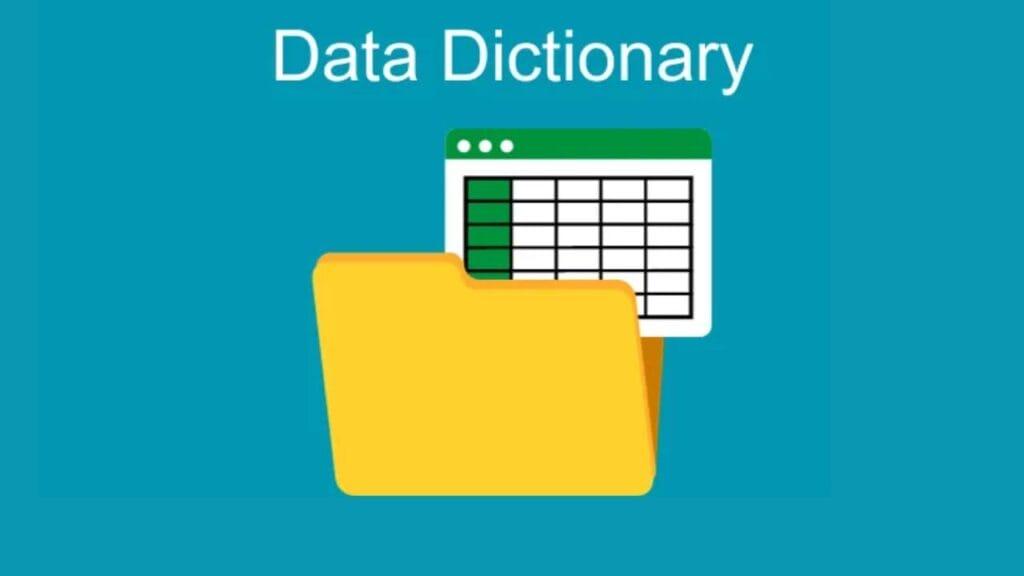Data dictionaries are becoming essential tools for optimizing project management in today’s data-driven world. In this article, we’ll explore the many benefits data dictionaries provide.

Benefits of Data Dictionaries
Here are some of the key benefits of using data dictionaries for project management:
- Centralized source of truth – Consolidates project information in one reliable, consistent record rather than fragmented data sources. Provides a single point of access.
- Improved communication – Enables smooth collaboration when project data definitions and business rules are shared across teams. Promotes alignment.
- Data governance – Applying data standards, guidelines, and access controls improves data quality, integrity, and security.
- Analytics and reporting – Standardized data facilitates generating insightful KPI reports and dashboards for tracking project performance.
- Change management – Logging data lineages and interdependencies helps assess downstream impact of changes to data assets.
- Historical reference – Can inform future projects by providing an audit trail of past data elements, metrics, and learnings.
- Productivity – Greatly accelerates finding the right project data when needed, reducing redundant work.
- Data integration – Common data dictionary enables combining data from disparate systems correctly.
- Compliance – Adhering to data definitions and business rules helps satisfy regulations and compliance requirements.
- Training aid – Clarifies project data for new team members onboarding.
Also read: Unlocking SEO Growth with Predictive Data Modeling
Organizing and Updating Data
Here are some key points on how data dictionaries help organize and update project data:
- Data categorization – Allows logically grouping related data elements based on the project plan, phases, workstreams etc. Enables quick search and retrieval.
- Standard definitions – Provides consistent meanings for data elements, metrics, and KPIs used by all team members and systems. Prevents confusion.
- Metadata – Captures additional attributes beyond definitions such as data types, formats, valid values, owners etc.
- Change logging – Tracks updates to data elements and metadata over time for auditing. Helps identify unauthorized changes.
- Version control – Manages and stores prior versions of data dictionary for rollback and comparison. Maintains integrity.
- Regular reviews – Old, unused data can be removed while new elements added to keep dictionary current. Keeps pace with project evolution.
- Data lineage mapping – Documents interconnections between data assets to assess downstream impacts of changes.
- Data validation – Applying rules and constraints to dictionary data helps validate inputs. Improves quality.
- Workflow automation – Updates to data can trigger automated tasks like notifications, reports, or data movements. Accelerates processes.
- Single source of truth – Consolidates project data ultimately into one centralized, trusted repository. Eliminates inconsistencies.

Ensuring Quality Control
Here are some ways data dictionaries promote quality control for project data:
- Data governance – Dictionaries codify guidelines for data entry, storage, usage, security, lifecycle management.
- Data validation – Business rules and input constraints help validate data and identify anomalies.
- Data integrity – Entity relationships clarify unique keys and foreign keys to maintain integrity.
- Consistent metrics – Standard definitions ensure KPIs are measured accurately and consistently across systems.
- Access controls – Managing user permissions ensures only authorized access and changes to data.
- Compliance – Adherence to project data policies and business glossary terms facilitates compliance.
- Accountability – Capturing data ownership provides accountability for entries and changes.
- Issue tracking – Logging inconsistencies, errors or issues provides traceability for remediation.
- Testing – Enables test case creation to verify systems meet data requirements.
- Master data – Provides single unified version of key data entities like customers, materials, chart of accounts etc.
- Audit trail – Change history allows auditing data quality and identifying root causes of issues.
- Training – Clarifies how data should be used properly for new users and team members.
Also read: How to Measure Database Performance
Implementing Best Practices
Here are some best practices for implementing data dictionaries effectively:
- Executive sponsorship – Gain leadership support to reinforce adoption and compliance.
- Cross-functional input – Involve all teams to ensure broad alignment and usage.
- Phased rollout – Introduce in stages starting with high value domains to gain buy-in.
- Training – Educate users on dictionary purpose, contents, governance and access methods.
- Usability – Format dictionary for easy navigation and search with user roles in mind.
- Change management – Develop processes to keep dictionary updated as projects evolve.
- Data governance team – Designate roles to oversee dictionary content standards and policies.
- Automation – Use tools to automate manual governance processes where possible.
- Direct integration – Embed dictionary into data reporting and analytics for single source of truth.
- Continuous improvement – Regularly gather user feedback to improve dictionary utility.
- Audits – Perform periodic audits to validate compliance and identify gaps.
- Master data alignment – Coordinate dictionary with broader MDM program.
Conclusion
With robust implementation and governance, data dictionaries provide immense value through data centralization, enhanced collaboration, informed decisions, and quality control. They are becoming essential assets for project management success.
FAQs
Q: What are some key elements to include in a project management data dictionary?
A: A project data dictionary should include definitions of key data elements, attributes like data types and formats, business rules, ownership info, allowed values, and sources.
Q: How often should you review and update a data dictionary?
A: Data dictionaries should be reviewed at least quarterly and updated whenever project data requirements change to ensure accuracy and relevance.
Q: Who should have access to the project data dictionary?
A: All project team members should have read access. Update access should be limited to data owners and stewards for quality control.
Q: Can data dictionaries from past projects be reused?
A: Yes, past data dictionaries can provide a template. But each project’s dictionary should be tailored to its unique data landscape.
Q: What’s the best way to ensure team adoption of a data dictionary?
A: Provide training on its purpose, contents, and proper usage. Encourage reference during data analysis and reporting. Perform spot checks.
Q: How can you maximize the value gained from a data dictionary?
A: Link it to reporting for standardized metrics. Integrate with data visualization tools. Use it to create a single version of truth.
Q: What are some key tools for creating a data dictionary?
A: Spreadsheets, database software, data modeling tools, and data governance/MDM platforms help build and manage data dictionaries.